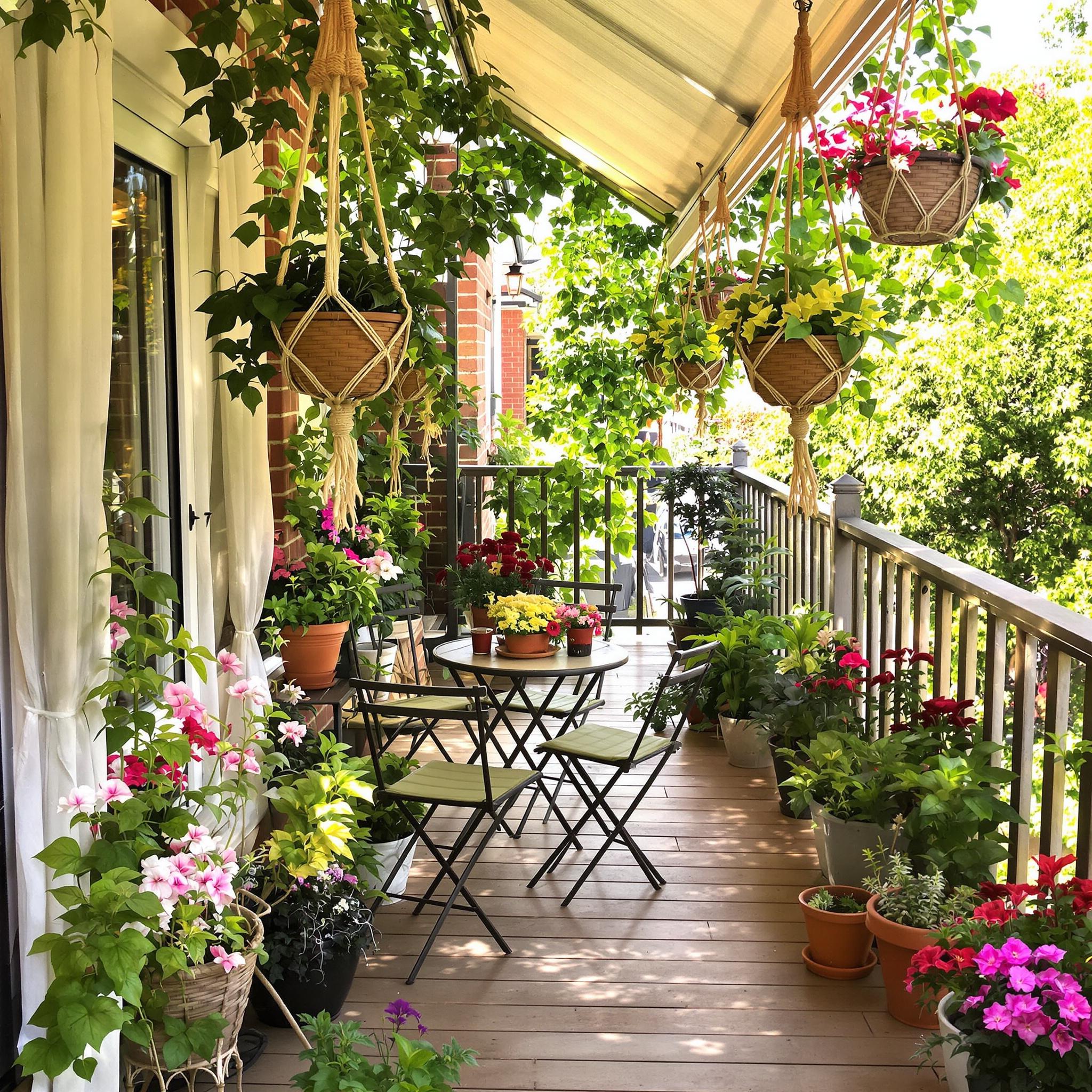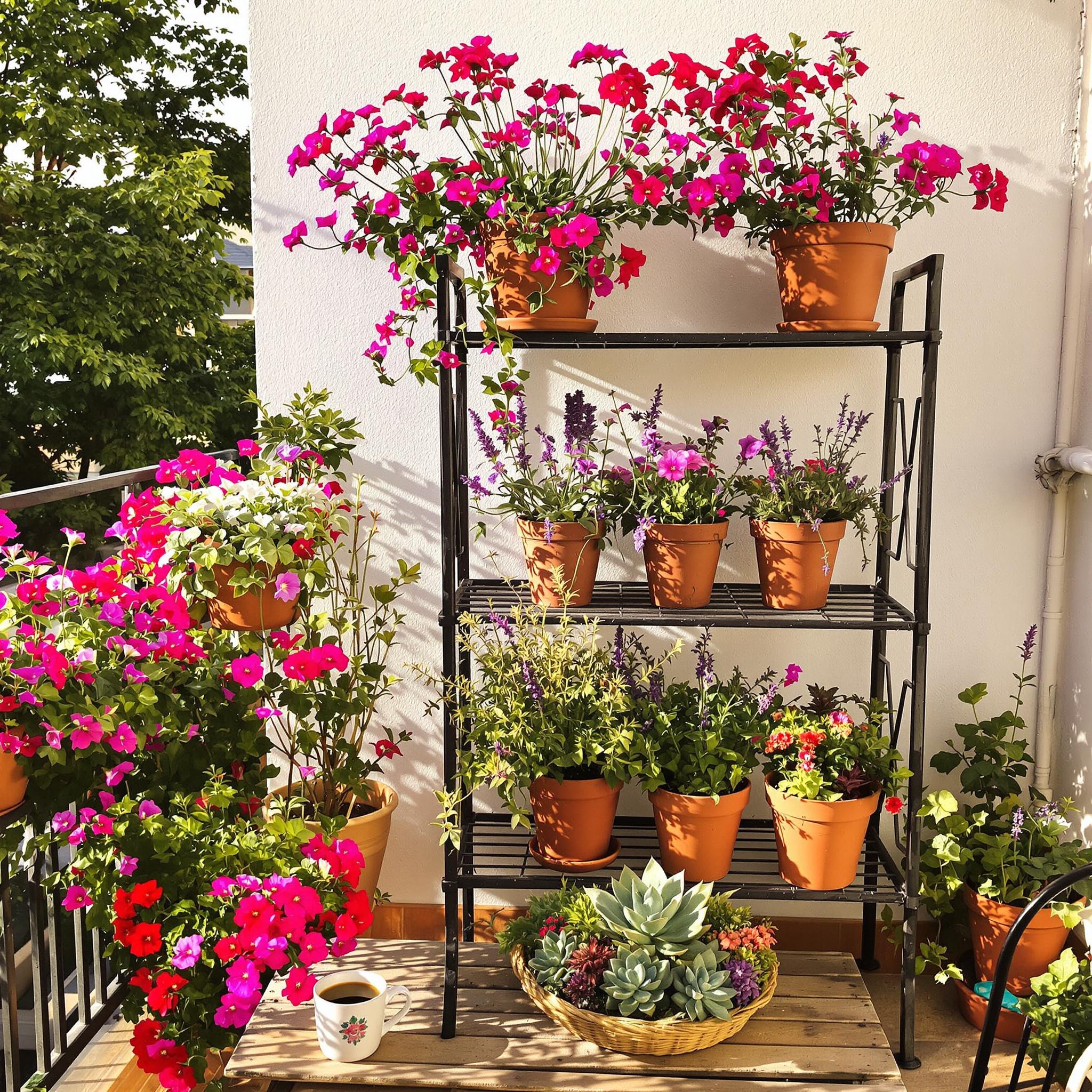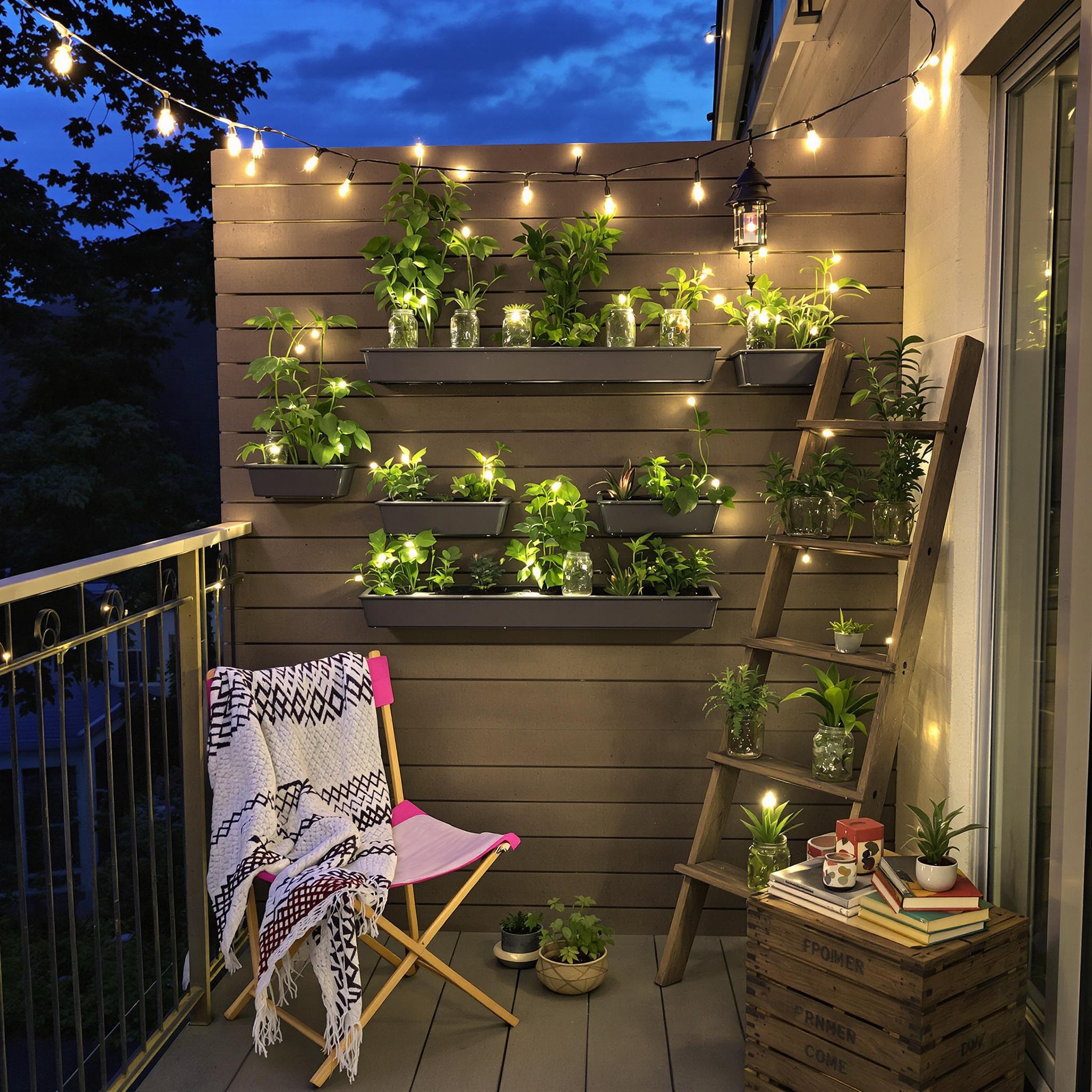Why Balcony Gardening is Gaining Popularity
Balcony gardening lets you grow plants in small spaces. It’s perfect for city living. More people are trying it because it adds greenery to urban homes. Fresh herbs, flowers, and veggies can thrive on balconies. You don’t need a big yard to enjoy gardening.
I started my own balcony garden last year. My tiny space turned into a green oasis. It felt rewarding to grow my own basil and mint. Watching plants grow brings joy and calm. Plus, it’s a great way to connect with nature daily.
Choosing the Right Plants for Sun or Shade
Not all plants grow well in every spot. Some need lots of sun, while others prefer shade. Picking the wrong plant can lead to disappointment. Know your balcony’s light conditions before planting.
- Sun-loving plants: Lavender, tomatoes, and marigolds.
- Shade-friendly plants: Ferns, hostas, and begonias.
Understanding these needs helps your garden thrive. A mismatch can stunt growth or kill plants quickly.
How to Assess Your Balcony’s Light Exposure
Every balcony has unique lighting. Start by observing your space closely. Note how sunlight moves throughout the day. Morning sun is gentler than harsh afternoon rays.
Here are key factors to check:
- Direction: South-facing balconies get the most sun. North-facing ones stay shaded.
- Obstructions: Nearby buildings or trees can block light.
- Seasonal Changes: Sun angles shift as seasons change. What’s sunny in summer may turn shady in winter.
Keep a simple log for a few days. Track when and where sunlight hits. This step saves time and effort later.
Benefits of Versatile Plants for Balcony Gardens
Versatile plants adapt to different light levels. They’re ideal for unpredictable balcony conditions. For example, geraniums do well in partial sun or full sun. Snake plants tolerate both low light and bright spots.
Using adaptable plants reduces stress. You won’t worry about constant adjustments. These plants also make your garden look cohesive. Mixing versatile options creates balance.
Last summer, I planted a mix of resilient plants. My balcony stayed lush even during rainy weeks. Choosing flexible plants made gardening easier and more fun.
Why Adaptable Plants Are Key to Success
Selecting adaptable plants ensures success. Weather changes and shifting light patterns happen often. Plants that handle these shifts thrive better. They save you from frequent replanting.
Adaptable plants also boost creativity. You can experiment with layouts and designs. Try grouping plants with similar needs together. This approach simplifies care routines.
For instance, pair a snake plant with pothos. Both handle varied light well. Adding trailing ivy creates visual interest. Such combinations work wonders in small spaces.
Finding the right plants takes some thought. But once you do, your balcony will flourish. Adaptability keeps your garden healthy year-round.
Plants That Thrive in Full Sun: Your Balcony’s Little Ray of Sunshine
If your balcony gets blasted with sun all day, don’t stress. Plenty of plants love soaking up rays. Some are tough, and others just show off with their blooms and textures.
Geraniums are my go-to for sunny spots. They come in reds, pinks, purples—you name it. Stepping out feels like a party. They need well-draining soil and regular water, but not too much. Tip: snip off dead flowers to keep them blooming.
Lavender smells amazing and loves full sun. It doesn’t mind if you forget to water it now and then. Just let the soil dry out between drinks. Bonus: bees and butterflies flock to it. Your balcony might turn into a pollinator hangout.
Succulents are perfect for sunny spaces. Low-maintenance champs. Stick them in pots with drainage holes, give them light, and water sparingly. I’m partial to jade plants—they look like tiny green sculptures. Mix them in containers for a modern vibe.
Shaded Balcony Bliss: Plants That Thrive Without Much Sunlight
Not everyone has a sun-soaked balcony, and that’s fine. Shady spots can still feel lush with the right plants. Shade-loving plants often have a tropical, mysterious vibe.
Ferns are the stars of shaded balconies. Their feathery fronds add elegance. Boston ferns are popular, but maidenhair ferns are my secret weapon—delicate yet hardy. Keep the soil moist and mist their leaves. They love humidity.
Begonias bring color without needing direct sun. Rex begonias are stunners with swirly patterns and metallic sheen. Use rich, well-draining soil. Don’t overwater. Group them together for a mini jungle effect—it’s striking and efficient.
Hostas are underrated but great for shaded balconies. Broad leaves in greens, blues, or variegated patterns look stunning. They’re easygoing—just water them and shield from harsh winds. They’ll stick around for years.
Versatile Plants That Can Handle Both Sun and Shade
What if your balcony gets mixed light? Or you move plants around like I do (*guilty*)? No worries—some plants adapt well.
Coleus is a standout. Its colorful leaves range from fiery reds to deep purples. It prefers partial shade but handles morning sun. Bonus: it’s easy to propagate. Snip a stem, pop it in water, and boom—a new plant.
Impatiens are cheerful bloomers. They thrive in filtered sunlight or full shade. Available in tons of colors, they flower nonstop. Keep them watered and pinch back leggy stems for bushier growth.
Peace lilies deserve a mention. Smaller varieties can thrive outdoors in shade or partial sun. Glossy leaves and white blooms scream sophistication. They droop when thirsty, so it’s easy to know when to water.
Seasonal Considerations: Rotating Plants Like a Pro
Light changes with seasons. Summer might bake your balcony, while winter leaves it in shadow. Adjusting helps plants thrive year-round.
In spring and summer, put sun-lovers like geraniums and lavender in the brightest spots. As autumn hits, move them to areas with reflected light or indoors near a sunny window. Shade-lovers like ferns and hostas can stay put, but protect them from frost.
Funny story: last winter, I forgot a begonia outside. It didn’t survive the freeze. Lesson learned—check weather forecasts and act fast during cold snaps.
Tips for Pairing Plants Based on Light Needs
Pairing plants isn’t just about looks. Group plants with similar light needs to avoid one hogging sunlight or casting shade.
For example, team succulents with coleus—they both like bright light. Add trailing ivy for a dynamic look. In shaded corners, pair begonias with ferns—their contrasting textures create interest without competing.
One rule: don’t place tall plants in front of shorter ones unless aiming for a layered forest effect. Otherwise, you block light. Add decorative touches like fairy lights or ceramic pots. Personality ties it all together.
Random thought: ever notice how some plants seem to “talk” to each other? Maybe they don’t, but grouping complementary species often makes them healthier. Could be they enjoy each other’s company—or maybe I’ve binge-watched too many gardening shows. Either way, experimenting is half the fun.
Boosting Your Space: Final Tips to Elevate Your Home Decor Game
You know, sometimes small changes make the biggest difference. Like when I swapped out my old throw pillows for brighter ones—suddenly, the whole room felt fresh. Little tweaks can really transform a space. Let’s dive into some tips you might not have thought of yet.
First, **lighting is key**. Harsh overhead lights? Time to switch it up. Soft, layered lighting can turn any room cozy. Try mixing floor lamps, table lamps, and string lights. Once, I bought a $15 rattan lampshade at a thrift store, and it became the star of my living room. Crazy, right?
- Add dimmer switches for adjustable brightness.
- Use candles or fairy lights to warm things up.
- Place mirrors to bounce natural light around.
Good lighting isn’t just about looks—it boosts your mood too. Think about cafes. They’re inviting because of smart lighting. Copy that idea and create soft, welcoming spots in your home.
Get Personal: Why Your Story Matters in Decor
Let’s talk personality. A house becomes a home when it reflects who you are. I’m not saying plaster family photos everywhere (though that’s fine too). I mean adding pieces that mean something to you. Maybe it’s a travel souvenir, a handmade quilt, or a quirky vase that made you smile.
I used to think personal touches had to be fancy or expensive. Then I noticed my favorite corner had postcards from friends, a jar of seashells, and an old guitar I barely play. None of that cost much, but it reminded me of happy times.
If you’re unsure how to add personal flair, try these:
- Make a gallery wall with art or photos that matter.
- Showcase hobbies—books, instruments, or craft supplies.
- Turn sentimental items into functional decor.
And don’t forget plants! They bring life to a room. Plus, caring for them feels rewarding. If you’re bad with plants, go for succulents—they’re hard to kill.
Declutter Like a Pro: Less Really Is More
Okay, deep breath. Let’s talk clutter. I used to hang onto stuff thinking, “Maybe I’ll need this someday.” Spoiler: I didn’t. Decluttering isn’t just cleaning—it’s making space for what matters.
One trick that helped me? The “one-year rule.” If I hadn’t used something in a year, it was gone. Sounds tough, but it feels amazing. Funny story: I donated clothes I hadn’t worn in ages. Later, I realized I didn’t miss a thing. My closet—and mind—felt lighter.
To declutter without losing your mind:
- Start small—one drawer or shelf at a time.
- Donate or sell what you don’t use.
- Use bins or baskets for smart storage.
Minimalism doesn’t mean boring. Keep it simple but add color and texture. A sleek coffee table with a bold rug? Perfect balance. Do what works for *you*.
Mix & Match: Breaking Design Rules Can Be Fun
Let’s be honest: design rules exist, but breaking them can be fun. Mix patterns, blend old and new, or paint a bold accent wall. Some of the coolest spaces break the rules.
Take my neighbor. She mixes mid-century furniture with bohemian textiles, and it works. Her secret? Confidence. When you own your choices, people notice the harmony, not the mismatch.
Try experimenting with:
- Weird color combos like navy and mustard.
- Mixing textures, like wood and metal.
- Adding eclectic accessories that make you happy.
And if it doesn’t work? No big deal. That’s the beauty of decor—you can always change it.
Your Home, Your Happy Place
At the end of the day, your home should feel like *yours*. Whether you’re on a budget or splurging, aim for a space that feels comfortable and inspiring. Life’s too short for stuff that doesn’t spark joy.
So go ahead—swap those pillows, hang that weird art you love, and embrace your quirks. Home isn’t just walls; it’s where your heart lives.
Frequently Asked Questions
1. How do I choose the right color palette for my home?
Pick colors based on the mood you want. Warm tones feel cozy; cool tones calm. Test swatches first and match existing furniture.
2. What’s the easiest way to refresh a room without spending much?
Rearrange furniture, swap out pillows, or change curtains. Thrift stores are great for cheap finds.
3. Should I follow trends in home decor?
Sure, but focus on timeless pieces. Trendy accents are easy to update, but big items like sofas should last.
4. How do I decorate a small space?
Use vertical storage, multi-functional furniture, and light colors. Mirrors help make the room feel bigger.
5. Can I mix different styles together?
Absolutely. Just keep one thing consistent, like color or material. Balance is key.
6. Where should I start when decorating a new home?
Start with big pieces like sofas and beds. Focus on function first, then add personal touches.
7. How do I make my rental feel like home?
Use removable wallpaper, temporary hooks, and freestanding shelves. Add colorful textiles and personal items.
8. Is it worth hiring an interior designer?
If you’re overwhelmed or have a big budget, yes. Otherwise, DIY with Pinterest or YouTube.
9. How often should I update my decor?
There’s no rule. Seasonal updates keep things fresh. Bigger changes can happen every few years.
10. How do I pick the perfect area rug?
Choose a size that fits the room. Avoid rugs that are too small. Pick materials and patterns that match your space.



